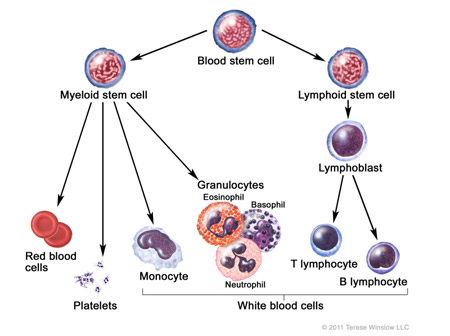About Hodgkin Lymphoma (Hodgkin Disease)
 Hodgkin lymphoma, also called Hodgkin’s lymphoma and Hodgkin disease, is a cancer of the lymphoid system. The lymphoid system is made up of various tissues and organs, including the lymph nodes, tonsils, bone marrow, spleen, and thymus. These organs produce, store and carry white blood cells to fight infection and disease.
Hodgkin lymphoma, also called Hodgkin’s lymphoma and Hodgkin disease, is a cancer of the lymphoid system. The lymphoid system is made up of various tissues and organs, including the lymph nodes, tonsils, bone marrow, spleen, and thymus. These organs produce, store and carry white blood cells to fight infection and disease.
Approximately 1,180 children and adolescents each year are diagnosed with Hodgkin lymphoma in the United States. It has been reported in infants and very young children, but it is considered rare before the age of five. The majority of Hodgkin lymphoma cases are in teenagers (age 15-19). Hodgkin lymphoma is the most common cancer of teenagers and young adults.
Signs and Symptoms of Hodgkin Lymphoma
 The most common symptom of Hodgkin lymphoma is swelling of the lymph nodes, a condition called lymphadenopathy. Lymph nodes are small tissues located throughout the body that store white blood cells to help filter out germs. People usually cannot feel lymph nodes unless they become swollen while fighting infection. Swollen lymph nodes are a common symptom of colds and flus, but in Hodgkin disease, the lymph nodes are usually larger than those that occur with common infections, and they do not shrink when treated with standard medications like antibiotics. The affected lymph nodes are usually found in the neck or above the collarbone, and less commonly under the arms or in the groin. The lymph nodes are usually painless, firm, rubbery, and movable in the surrounding tissue.
The most common symptom of Hodgkin lymphoma is swelling of the lymph nodes, a condition called lymphadenopathy. Lymph nodes are small tissues located throughout the body that store white blood cells to help filter out germs. People usually cannot feel lymph nodes unless they become swollen while fighting infection. Swollen lymph nodes are a common symptom of colds and flus, but in Hodgkin disease, the lymph nodes are usually larger than those that occur with common infections, and they do not shrink when treated with standard medications like antibiotics. The affected lymph nodes are usually found in the neck or above the collarbone, and less commonly under the arms or in the groin. The lymph nodes are usually painless, firm, rubbery, and movable in the surrounding tissue.
Children and teens with lymphoma may experience other symptoms before they are diagnosed. Often, these are “systemic” symptoms that affect the entire body. These generalized symptoms of lymphoma include:
- Poor appetite
- Weight loss
- Night sweats
- Fever
- Fatigue or sense of ill-feeling
- Itching (pruritus) is another symptom in patients with Hodgkin disease; itching can be mild or severe, and tends to occur more often in patients with advanced disease



